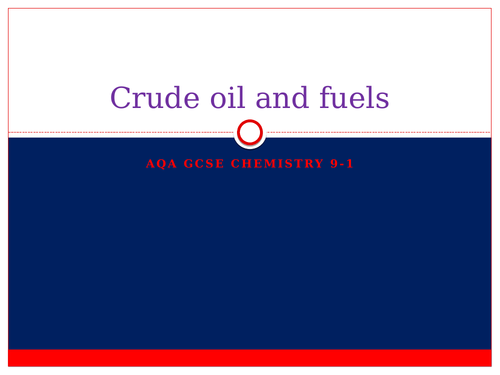
28Uploads
12k+Views
4k+Downloads
Chemistry

AS ORGANIC CHEMISTRY SUMMARY PAGE (OCR)
A summary page of key principles of OCR AS Organic Chemistry.
Includes properties of key compounds (alkanes, alkenes, haloalkanes and alcohols) as well as details on the reactions.
Very useful as a reference tool in revision

GCSE revision on atomic structure
This resource covers all the key points needed for GCSE students to understand the topic of atomic structure.
Split into eight sub-topics it covers:
atoms
chemical equations
separating mixtures
fractional distillation and paper chromatography
history of the atom
structure of the atom
ions, atoms and isotopes
electronic structures

AQA GCSE Chemistry 9-1 - Rates of Reaction and Equilibrium
This resource gives information on rates of reaction and equilibrium. It can be used in lessons, given out as a hand-out or used for revision.
The powerpoint presentation covers:
working out the rate of reaction
collision theory
surface area and reaction rate
temperature and reaction rate
concentration and pressure and reaction rate
the effects of catalysts on reaction rate and their environmental impact
reversible reactions
dynamic equilibrium
le chatelier’s principle - how changes in concentration, pressure and temperature effect equilibrium
There is also a summary sheet which gives an overview on factors that influence the rate of reaction.

AS OCR CHEMISTRY - PERIODIC TABLE AND ENERGY
A detailed set of notes which can be given to students to support classwork and as an aid in revision.
These notes cover:
Periodicity
Reactivity trends
Enthalpy changes
Reaction rates and equilibrium
I find these notes are useful in supporting students of all abilities.

AQA GCSE CHEMISTRY 9-1 - Crude oil and fuels powerpoint presentation
This powerpoint presentation covers all the key information on crude oil and fuels. It can be used as the focal point of lessons, as a handout or given to students at the end of learning about the topic to help with revision.

OCR A level Chemistry - Physical Chemistry and Transition Elements
A detailed set of notes which can be used for revision or consolidation.
The notes cover:
rates of reaction
equilibrium
acids, bases, and pH
buffers and neutralisation
enthalpy and entropy
redox and electrode potentials
transition elements






